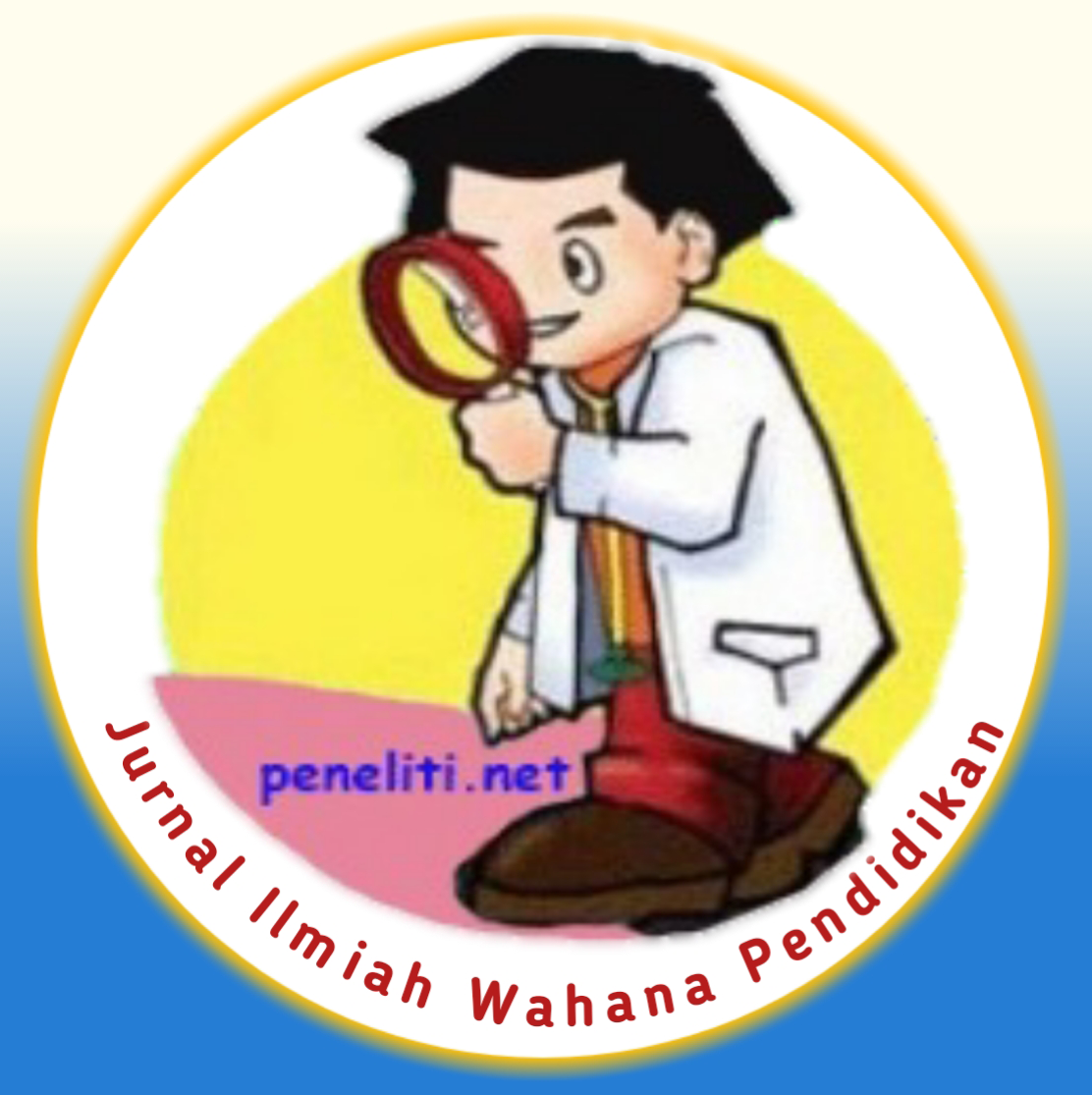Flipped Learning Sebagai Bentuk Pembelajaran Blended di Era Digital (Suatu Tinjauan Konseptual)
Abstract
This study is used to review the concepts of flipped learning and blended learning and to determine the extent to which the concept of flipped learning is a description of blended learning. To achieve this goal, this study describes conceptually about flipped learning and blended learning. Based on the analysis of the concept of flipped and blended learning, then build a linkage construct between the concept of flipped learning which is applied by blended learning with reference support. The implementation of these learning strategies uses Information and Communication Technology (ICT) in various digital platforms that have developed to date. The use of ICT that responds to various learning models also changes various learning strategies in the form of blended learning and fully online. Leaning Content Management System (LCMS) assistance whose applications have been properly installed and easy to access as a form of learning management. Blended learning involves face-to-face and online learning, where both are used to complement each other so as to create an interesting learning environment. Flipped learning is one form of applying blended learning. The current development is known as flipped blended.
References
Alias, M., Iksan, Z. H., Karim, A. A., Nawawi, A. M. H. M., & Nawawi, S. R. M. (2020). A Novel Approach in Problem-Solving Skills Using Flipped Classroom Technique. Creative Education, 11(01), 38–53. https://doi.org/10.4236/ce.2020.111003
Alsowat, H. (2016). An EFL flipped classroom teaching model: Effects on English language higher-order thinking skills, student engagement and satisfaction. Journal of Education and Practice, 7(9), 108–121.
Arnold-Garza, S. (2014). The flipped classroom teaching model and its use for information literacy instruction. Communications in Information Literacy, 8(1), 7–22. https://doi.org/10.15760/comminfolit.2014.8.1.161
Babatunde Adedoyin, O., & Soykan, E. (2020). Covid-19 pandemic and online learning: the challenges and opportunities. https://doi.org/10.1080/10494820.2020.1813180
Branch, R. M. (2009). Instructional Design: The ADDIE Approach (Vol. 3). Springer. https://doi.org/10.1007/978-0-387-09506-6
Cabı, E. (2018). The impact of the flipped classroom model on students’ academic achievement. International Review of Research in Open and Distance Learning, 19(3), 202–221. https://files.eric.ed.gov/fulltext/EJ1185114.pdf
Caladien, R. et al. (2011). Instructional Design: Concepts, Methodologies, Tools and Applications.pdf. IGI Global.
Carman, J. . (2005). Blended learning Design (Five Key Ingredients. eadkong.com/page/blended-learning-design-five-key-ingredients-7885136
Donald, C. K. (2014). A Study of the Effect the Flipped Classroom Model on Student Self-Efficacy. Journal of Chemical Information and Modeling, 53(9), 1689–1699.
Gagné, R. M., Briggs, L. J., & Wager, W. W. (2005). Principles of Instructional Design. In Performance Improvement (Fourth edi). Harcourt Brace College Publisher.
Garrison, D. R., & Kanuka, H. (2004). Blended learning: Uncovering its transformative potential in higher education. Internet and Higher Education, 7(2), 95–105. https://doi.org/10.1016/j.iheduc.2004.02.001
Garrison, D. R., & Vaughan, N. D. (2008). Blended learning in Higher Education, Framework, Principles and Guidelines. In Jossey-Bass, a wiley imprint.
Huynh, T. L., & Nguyen, U. N. T. (2019). Students’ perceptions and design considerations of flipped interpreting classroom. Theory and Practice in Language Studies, 9(9), 1100–1110. https://doi.org/10.17507/tpls.0909.05
Kim, Y., Glassman, M., Bartholomew, M., & Hur, E. H. (2013). Creating an educational context for Open Source Intelligence: The development of Internet self-efficacy through a blogcentric course. Computers and Education, 69, 332–342. https://doi.org/10.1016/j.compedu.2013.07.034
Love, B., Hodge, A., Grandgenett, N., & Swift, A. W. (2014). Student learning and perceptions in a flipped linear algebra course. International Journal of Mathematical Education in Science and Technology, 45(3), 317–324. https://doi.org/10.1080/0020739X.2013.822582
Martin, M. (2015). Review of flipped learning. British Journal of Educational Technology, 46(6), 1–22. https://doi.org/10.4236/ce.CITATIONS
O’Flaherty, J., & Phillips, C. (2015). The use of flipped classrooms in higher education: A scoping review. Internet and Higher Education, 25(May), 85–95. https://doi.org/10.1016/j.iheduc.2015.02.002
Permendikbud No. 109. (2013). Penyelenggaraan Pendidikan Jarak Jauh Pada Pendidikan Tinggi.
Undang-undang RI Nomor 20 Tahun 2003 tentang sistem pendidikan nasional, Pub. L. No. Undang-Undang RI No. 20 Tahun 2003, 2 (2003).
Pribadi, B. A. (2009). Model Desain Sistem Pembelajaran. Dian Rakyat.
Reyna Zeballos, J. L., & Meier, P. (2016). Learning to Surf: Explaining the Flipped Classroom (FC) to Science Students Using an Analogy. American Journal of Educational Research, 4(December), 1213–1216. https://doi.org/10.12691/education-4-17-4
Sakulprasertsri, K. (2017). Flipped Learning Approach: Engaging 21st Century Learners in English Classrooms. LEARN Journal: Language Education and Acquisition Research Network, 10(2), 132–143.
Schunk, D. H. (2012). Learning theories, An Educational Perspective (Sixth edit). Pearson Educationa, Inc.
Seels, B. B., & Richey, R. C. (1994). Instructional Technology: The definition and domain of the field. AECT.
Sharma, P. (2018). Flipped Classroom : A Constructivist Approach. International Journal of Research in Enginering, IT and Social Science, 08(08), 164–169.
Sjafei, I. (2019). STAD-Type Cooperative Learning Design to Develop Student Online Learning Activities. International Journa L of Education, Information Technology and Others (Ijeit), 4(1), 320–331. https://doi.org/10.5281/zenodo.5125001
Spector, J. M., Leslie, M., & Harvey, D. M. (2009). Instructional Technologies for the 21st Century. (1st ed.). Springer US. https://doi.org/10.1007/978-0-387-09667-4
Suparman, M. A. (2014). Desain Instructional Modern (Keempat). Erlangga.
Thorne, K. (2003). Blended Learning: How to Integrate Online and Traditional Learning. In Kogan Page (First). Kagan Page Limited. https://doi.org/http://dx.doi.org/
Wang, Y., Han, X., & Yang, J. (2015). Revisiting the blended learning literature: Using a complex adaptive systems framework. Educational Technology and Society, 18(2), 380–393.
Yarbro, J., Arfstrom, K.M., McKnight, K., McKnight, P. (2014). Flipped learning review 2014. George Mason University, 20. http://flippedlearning.org/domain/41
Zhang, Y., & Liu, W. (2021). Research on the Construction of Blended Teaching Mode Based on Flipped Class—Taking the Undergraduate Discrete Mathematics Course as an Example. Creative Education, 12(05), 957–965. https://doi.org/10.4236/ce.2021.125069




